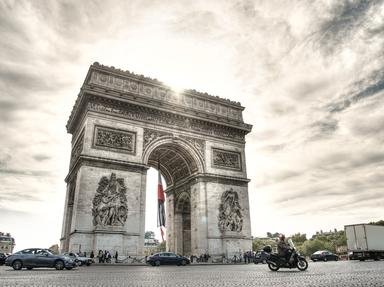Quiz Answer Key and Fun Facts
1. The term 'Négrophilie' was coined by the French, probably at the end of the 19th century to describe their interest in black American and African culture. What did the term eventually specifically mean and, with all good intentions, come to represent?
2. France was a major colonial power prior to the 1950s. They had colonized large areas of Africa, particularly West Africa. African arts and crafts had slowly begun to find their way to dealers and auction houses in Paris. The avant-garde French artists began to sense the power of these pieces. Among the influential artists of the day who, in particular, began to incorporate the African themes in his work?
3. The United States entered WWI rather belatedly in 1917. Harlem was quick to volunteer for their patriotic duty. They formed the New York Heavy Foot Infantry, but in Harlem they were known by the title the French bestowed upon them: 'The Harlem Hell Fighters'. What type of jobs or trade did these men primarily come from?
4. For the Parisian avant-garde, embrace of African culture and the growing population of American Blacks was a direct shot across the bows of the bourgeoisie. When Langston Hughes, the poet and writer and his contemporaries arrived in Paris, they caused a stir and were admired for their ...?
5. Almost immediately after WWI, Harlem experienced a renaissance in all Black artistic and creative endeavors, but especially in the emergence and popularization of jazz. An amalgam of blues and ragtime was emerging with a less formalized syncopation - and that was how Jazz was born. Who, of all the great musicians of the time, is reputed to be the originator of Jazz Piano?
6. Of course, the best known of the Black American performer of this time was Josephine Baker. In 1925, she and her musicians and dance troupe opened in 'La Revue Nègre'. To the thrill of the Paris audience, they positively exploded on stage. In her opening number, what was the design of her stage costume?
7. Among the excellent musicians playing in Josephine Baker's troupe, was perhaps one of the first and finest jazz soloists. Sidney Bechet became renowned, at an early age, as a true virtuoso of the jazz clarinet. He was described by Ernst Ansermet (the Swiss conductor) as: 'The extraordinary clarinet virtuoso Bechet is an artist of genius'.
Despite his tremendous success on the clarinet, Bechet became equally legendary on another jazz instrument, giving it voice and expanding it's important role in the best jazz being played by bands on both sides of the Atlantic. What was this instrument?
8. A fascinating addition to the flamboyant women who were successful in Black Montmatre was Miss Ada Beatrice Queen Victoria Louise Smith aka Bricktop. A performer and (in her words) saloon-keeper. After successfully assisting in turning her first venue from a dive into a real hotspot, she managed to open her own, namesake establishment across the street. Well-documented gossip has two epitomes of the Jazz Age fighting over her on the corner of Rue Pigalle and Rue Fontaine. Who were these two gallants.
9. Although originally the term 'art nègre' had been used to refer to African decorative pieces and the influence they had upon the French artistic community. The effect of the influx of highly innovative and creative black American artists, with freedom from bigotry, did in fact produce a culture of much greater breadth and importance than originally thought. By what name was this movement known?
10. By the end of the 20s, many of the American ex-pats had gone home, such as Fitzgerald and Hemingway. The Wall Street crash of 1929, and the subsequent depression, had made it financially difficult for many to live abroad. Many African Americans still wished to avoid the dire lack of jobs in the States, as well as the racial bigotry. What occurred in Paris to make the welcome less inviting for the ex-pat Harlem musicians?
Source: Author
Englizzie
This quiz was reviewed by FunTrivia editor
bloomsby before going online.
Any errors found in FunTrivia content are routinely corrected through our feedback system.
